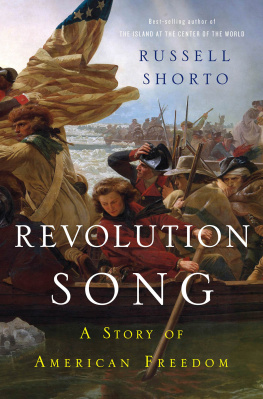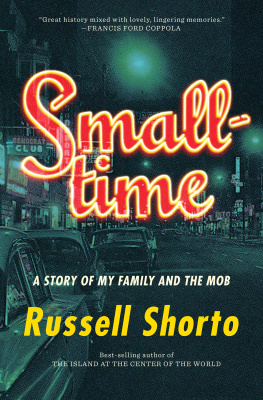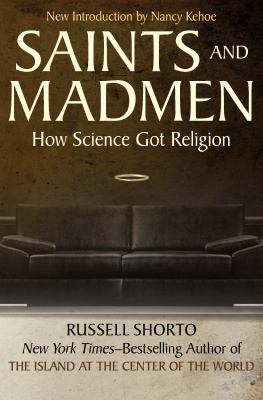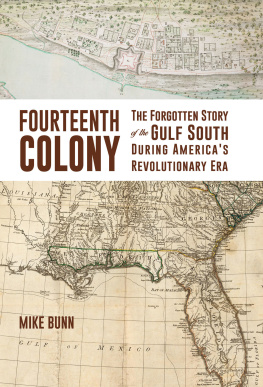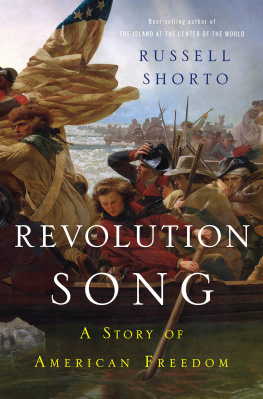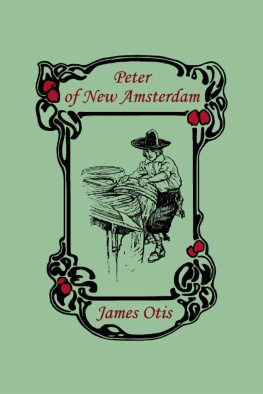Russell Shorto - The Island at the Center of the World: The Epic Story of Dutch Manhattan and the Forgotten Colony That Shaped America
Here you can read online Russell Shorto - The Island at the Center of the World: The Epic Story of Dutch Manhattan and the Forgotten Colony That Shaped America full text of the book (entire story) in english for free. Download pdf and epub, get meaning, cover and reviews about this ebook. year: 2005, publisher: Doubleday, genre: History. Description of the work, (preface) as well as reviews are available. Best literature library LitArk.com created for fans of good reading and offers a wide selection of genres:
Romance novel
Science fiction
Adventure
Detective
Science
History
Home and family
Prose
Art
Politics
Computer
Non-fiction
Religion
Business
Children
Humor
Choose a favorite category and find really read worthwhile books. Enjoy immersion in the world of imagination, feel the emotions of the characters or learn something new for yourself, make an fascinating discovery.

- Book:The Island at the Center of the World: The Epic Story of Dutch Manhattan and the Forgotten Colony That Shaped America
- Author:
- Publisher:Doubleday
- Genre:
- Year:2005
- Rating:5 / 5
- Favourites:Add to favourites
- Your mark:
- 100
- 1
- 2
- 3
- 4
- 5
The Island at the Center of the World: The Epic Story of Dutch Manhattan and the Forgotten Colony That Shaped America: summary, description and annotation
We offer to read an annotation, description, summary or preface (depends on what the author of the book "The Island at the Center of the World: The Epic Story of Dutch Manhattan and the Forgotten Colony That Shaped America" wrote himself). If you haven't found the necessary information about the book — write in the comments, we will try to find it.
Russell Shorto: author's other books
Who wrote The Island at the Center of the World: The Epic Story of Dutch Manhattan and the Forgotten Colony That Shaped America? Find out the surname, the name of the author of the book and a list of all author's works by series.
The Island at the Center of the World: The Epic Story of Dutch Manhattan and the Forgotten Colony That Shaped America — read online for free the complete book (whole text) full work
Below is the text of the book, divided by pages. System saving the place of the last page read, allows you to conveniently read the book "The Island at the Center of the World: The Epic Story of Dutch Manhattan and the Forgotten Colony That Shaped America" online for free, without having to search again every time where you left off. Put a bookmark, and you can go to the page where you finished reading at any time.
Font size:
Interval:
Bookmark:
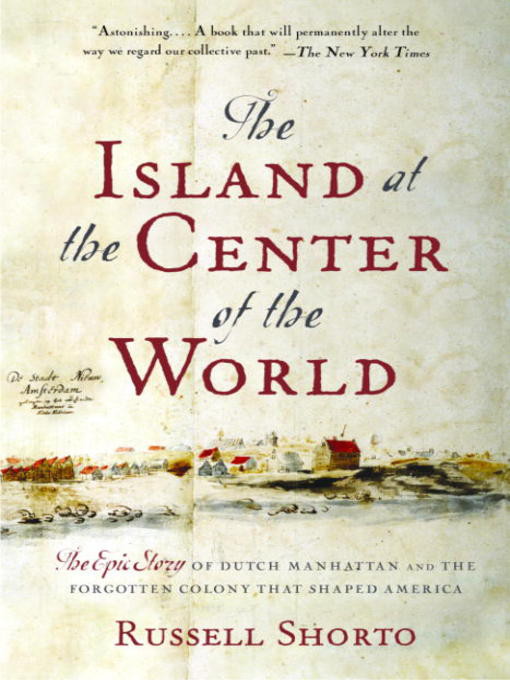
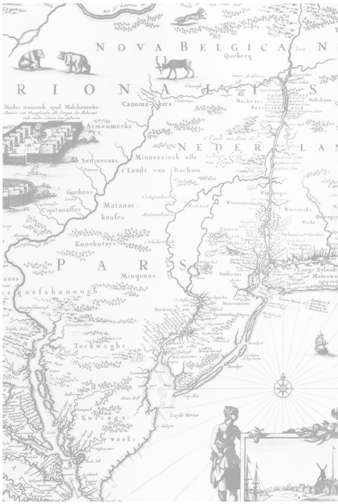
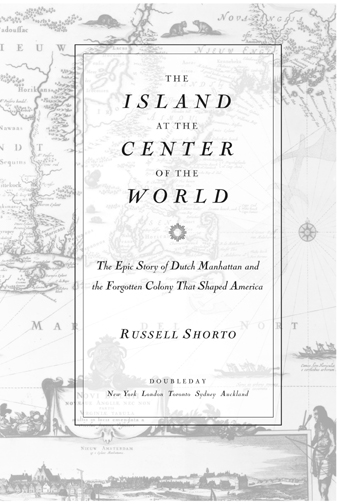
CONTENTS
For my father
ACKNOWLEDGMENTS
This book would not exist without the work of Charles Gehring, who, as director of the New Netherland Project, has devoted thirty years to translating the manuscript Dutch records of the New Netherland colony. But published translations aside, for more than two years he has welcomed me into his workspace, opened his files to me, offered advice, made introductions, and helped in dozens of other ways. Over Vietnamese lunches and pints of microbrew beer, on the Albany waterfront and along the canals of Amsterdam, he has been my guide. My greatest thanks to you, Charly.
I also owe a debt of gratitude to Janny Venema of the New Netherland Project, for similar help mixed with friendship. She spent days transcribing as-yet-unpublished manuscripts for me. She gave me a primer in how to read seventeenth-century Dutch handwriting. She made the town of Beverwyck, long since swallowed up by the city of Albany, come alive for me.
Of the many others who helped me, I would like to thank Jeremy Bangs and Carola de Muralt of the American Pilgrim Museum in Leiden, the Netherlands, who gave me a sense of the texture of seventeenth-century Dutch life and a magnificent afternoon-long tour of their one-of-a-kind museum. Patricia Bonomi, professor emeritus of history at New York University, offered guidance as I set out on the project and encouragement as I approached the end. Peter Christoph of the New York State Library shared with me his reminiscences about his discovery of the Dutch manuscripts and efforts to get them translated. Diane Dallal, archaeologist with New York Unearthed and the South Street Seaport Museum, helped me to visualize New Amsterdam amid the canyons of lower Manhattan. Firth Fabend, historian and author, helped on many fronts, especially in understanding how Dutchness changed in North America from the seventeenth century onward, and in assessing the colony's legacy. The Friends of New Netherland invited me to speak at their annual meeting in 2003, thus providing me a chance to air some of my ideas about the Dutch colony. Willem Frijhoff of the Free University of Amsterdam, distinguished historian and authority on New Netherland and its people, is a man of great generosity who offered brilliant, timely advice and encouraged me in my focus on Adriaen van der Donck. Elisabeth Paling Funk, Dutch-born scholar and authority on Washington Irving, helped me to disentangle history from myth, and translated some seventeenth-century poetry for me. Wayne Furman of the New York Public Library, as well as the staff of the library's New York History and Genealogy division, accommodated me throughout my research. I'm grateful to Joyce Goodfriend of the University of Denver, authority on early New York, for good conversation on history and historians, for advice and pointers, and for introducing me to Jack's Oyster House in Albany. Anne Halpern of the National Gallery of Art assisted with research on the portrait of Adriaen van der Donck. Leo Hershkowitz, professor of history at Queens College, who has written with equal elegance about both the Jews of New Amsterdam and Boss Tweed, knows New York history as few people on earth do, and gave me the benefit of his perspective. Maria Holden, conservator at the New York State Archives, gave me a primer on the Dutch documents as artifacts: on paper, ink, and methods of preservation.
On a sun-dazzled Fourth of July morning on the terrace of the Stadscafe in the city of Leiden, Jaap Jacobs of the University of Amsterdam broadened my view of seventeenth-century American colonial history, helping me to see it not merely as foreshadowing later American history but as part of European history and the global power struggle between England and the Dutch Republic; I am also grateful for his elegant writings on New Netherland and on the concept of tolerance in the seventeenth century, and for conversation on the prickly figure of Peter Stuyvesant, a biography of whom he is currently at work on. My thanks to Joep de Koning, probably the world's foremost collector of maps of New Netherland, for conversation, for insights, and for giving me a chance to roam among his one-of-a-kind collection; to Dennis Maika of Fox Lane High School, Bedford, New York, whose dissertation on and insights into the significance of the 1653 municipal charter and the subsequent boom in the colony were instrumental in shaping my own thoughts; to Simon Middleton of the University of East Anglia, for pointers on early modern Republicanism in the Netherlands and for his encouragement as a fellow Van der Donck enthusiast; to Peter Neil, director of the South Street Seaport Museum; to Chip Reynolds, skipper of the Half Moon, for taking me aboard and giving me a feel of the ship; to Peter Rose, authority on seventeenth-century Dutch food, for culinary assistance; to Thomas Rosenbaum of the Rockefeller Archives, Pocantico Hills, New York, who afforded me access to that institution's remarkable collection of seventeenth-century Dutch notarial records; to Ada Louise Van Gastel, for her work on Adriaen van der Donck and her encouragement; to Hanny Veenendaal of the Netherlands Center in New York City, for giving me a grounding in the Dutch language and for assisting in translations and in reading old Dutch documents; to Greta Wagle, who welcomed me into the family of New Netherland aficionados, put me in touch with people, and has been generally delightful to know; to Gerald de Weerdt, curator of 't Behouden Huys Museum, Terschelling, the Netherlands, for sharing insights on Dutch seafaring; to Laurie Weinstein, Western Connecticut State University, who helped in my attempts to understand Dutch-English-Indian interactions; and to Thomas Wysmuller for discussions on Dutch history and for enthusiastic support.
A separate thank you to Firth Fabend, Charly Gehring, Leo Hershkowitz, Joep de Koning, Tim Paulson, Janny Venema, and Mark Zwonitzer for reading the manuscript and offering excellent comments and critiques. The book is greatly improved by their input, though of course any errors remain my own doing.
My thanks also to Coen Blaauw; Jos Brando, Western Michigan University; Marilyn Douglas, New York State Library; Howard Funk; Dietrich Gehring; April Hatfield, Texas A&M University; L. J. Krizner, the New York Historical Society; Karen Ordahl Kupperman, New York University; Hubert de Leeuw; Harry Macy, editor of The New York Genealogical and Biographical Record; Richard Mooney, New York Times editorial board, retired; the staff of the New York State Library and Archives; Hennie Newhouse, Friends of New Netherland; Don Rittner; Martha Shattuck; Amanda Sutphin, New York City Landmarks Preservation Commission; Martine Julia van Ittersum, Harvard University; Cynthia van Zandt, University of New Hampshire; Loet Velmans; David William Voorhees, of The Holland Society of New York and managing editor of de Halve Maen; Charles Wendell, Friends of New Netherland; and James Homer Williams, Middle Tennessee State University.
Thanks also to my team. Anne Edelstein, my agent and friend, plucked the rabbit of an idea out of my brain and made this all happen. Laura Williams gave advice in the early going, and Emilie Stewart assisted in the endgame. Anne Hollister and Elisabeth King fact checked the manuscript with scrupulosity and style. Tim Paulson listened to my initial rambling, inchoate idea, pushed me to carry it forward, and was there along the way with smart counsel. Bill Thomas, my editor at Doubleday, championed the project from the beginning and managed throughout to support it with the excellent combination of overflowing enthusiasm and sharp critical judgment. Thanks also to Kendra Harpster, John Fontana, and Christine Pride of Doubleday. In London, Marianne Velmans, my editor at Transworld, brought her Anglo-Dutch perspective to bear, and critiqued the manuscript with great insight.
Next pageFont size:
Interval:
Bookmark:
Similar books «The Island at the Center of the World: The Epic Story of Dutch Manhattan and the Forgotten Colony That Shaped America»
Look at similar books to The Island at the Center of the World: The Epic Story of Dutch Manhattan and the Forgotten Colony That Shaped America. We have selected literature similar in name and meaning in the hope of providing readers with more options to find new, interesting, not yet read works.
Discussion, reviews of the book The Island at the Center of the World: The Epic Story of Dutch Manhattan and the Forgotten Colony That Shaped America and just readers' own opinions. Leave your comments, write what you think about the work, its meaning or the main characters. Specify what exactly you liked and what you didn't like, and why you think so.

